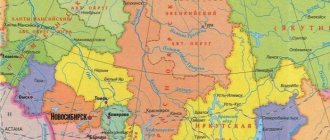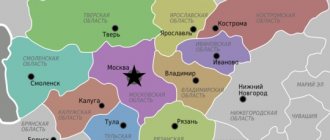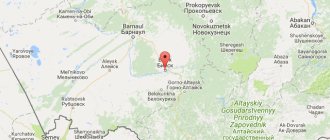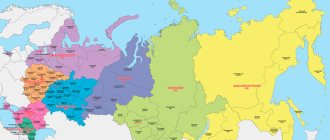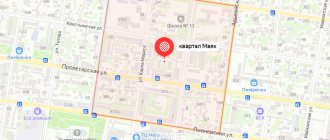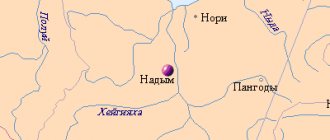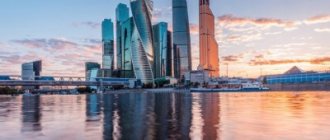Maykop is a city with the status of a municipal district of republican significance. This settlement is located in the southern part of Russia. Translated from the Adyghe language, Maikop (Myekkuape) means “Valley of Apple Trees”. The city received this name for the huge number of picturesque landscapes and warm climate, the conditions of which are conducive to the development of gardening.
The settlement of Maykop was founded in 1857 as a defensive outpost. It received city status in 1870.
General information and history
After the answer to the question of where Maykop is located, it is worth telling a brief story about its origin.
Translated from Adyghe, the name of the city means “valley of apple trees.” The first mention of Maykop can be found in Russian documents dating back to the war in the Caucasus at the beginning of the 19th century.
The very name of the city comes from the Mieko River, i.e. it is located at its mouth. Literally the name is translated as follows: Ust-Dolino-Yablonovsk.
The history of the city began in 1825, as follows from documents, when it was decided to build a fortification on this territory in order to then equip it for future military campaigns.
In 1870, the city became the district center of the Kuban region. Gradually, a school, a men's college, a library and a people's house were opened here, and then a city telephone exchange was built.
During the revolution, Soviet power was established here, and in 1922, by order of the All-Russian Central Executive Committee, the Circassian (Adyghe) Autonomous Region was formed, but its administration was in Krasnodar. Only in 1936 Maykop became the center of the region.
In 1990, it was renamed a republic, but its capital remained the same.
Content
- 1 History of the city
- 2 Main shrines
- 3 Monasteries
- 4 Temples 4.1 Holy Trinity Cathedral (Maykop)
- 4.2 Holy Resurrection Church (Maikop)
- 4.3 Temple of the Icon of the Mother of God “Sovereign” (Maikop)
- 4.4 Church of St. Nicholas the Wonderworker (Maykop)
- 4.5 Temple of Peter and Fevronia (North-Eastern Gardens)
- 4.6 Church of the Intercession of the Blessed Virgin Mary (Khanskaya)
Maykop (Republic of Adygea): population and education
Today, about 140 thousand people live in the capital. This is a very small city, but the largest in the republic. Once upon a time there were more people living here, but recently their number has decreased.
For example, the population in 1973 was 122 thousand, and already in 1985 - 140 thousand people. In just ten years it grew to 165 thousand, and a sharp decline began in 2002. This is mainly due to people leaving the city and moving to larger cities such as Krasnodar or Rostov-on-Don.
The ethnic composition of the city in 2010 was such that 70% of Russians lived here, 18% of Adygeis, and Armenians, Ukrainians and Circassians made up a little more than 1% of the total population.
In Maykop you can get an education at the Adyghe State University and at the Maykop State Technological University, and there are also schools, colleges and colleges.
Mostly people work in industrial enterprises, such as a machine-building plant, a gear plant, and the food industry is also developed.
How to get to Maykop from Moscow
The city of Maykop is surrounded by hills and highlands. You can get from Moscow to the capital of the Republic of Adygea by your own car, train, bus or plane. Direct communication with Maykop is only possible by bus or private car.
Travelers who prefer to travel by rail or plane are forced to get to neighboring settlements, making 1-2 transfers.
By plane
Due to the fact that Maykop does not have its own airport, it is impossible to fly to it by plane. In this case, you can use an alternative flight from Moscow to Krasnodar. To get to Maykop, you will have to cover a distance of 101 km. The average price of a plane ticket from Moscow to Krasnodar is 3,317 rubles.
Krasnodar Airport
Upon arrival from Moscow to Krasnodar, it is recommended to take a taxi to the city bus station. Having arrived at your destination, you should purchase a bus ticket between Krasnodar and Maykop.
Flights on this route are dispatched according to the following schedule:
- Bus No. 1709 with departure at 15-36 hours, arrival in the capital of Adygea at 18-16 hours.
- Bus No. 3440 with departure at 16-25 hours and arrival at 19-14 hours.
- Bus No. 10141 departs at 16-58 hours and arrives in Maykop at 19-47 hours.
- Bus No. 1357 with departure at 17-30 hours and arrival at 20-10 hours.
The average cost of a bus ticket between Krasnodar and Maykop is 380 rubles. Passenger transportation on the above routes is carried out daily.
By rail
To get to Maykop from Moscow by rail, you must follow the following algorithm:
- Arrive at the Kazan railway station in Moscow.
- Buy a ticket and board train No. 102M from Moscow to Tuapse. Departure at 14-35 hours.
- At 11-29 am the next day, arrive in Tuapse. Travel time will be 20 hours 54 minutes.
- Go to the waiting room of the Tuapse railway station.
- Purchase and then board train No. 812 from Tuapse to Maykop. Departure at 18-46 hours.
- At 21-41 hours, arrive at your final destination, which is the Maykop railway station. Travel time will be 2 hours 55 minutes.
Tuapse railway station
The price of a ticket for the Moscow - Tuapse train is from 3800 rubles. For travel to Maykop after a complete transfer you will have to pay 415 rubles. The main disadvantage of railway communication with the capital of Adygea is the long journey, as well as the need to make transfers with a long wait for the train.
Bus service
There are several permanent direct flights from Moscow to Maykop.
The following article shows the schedule of bus services between these 2 cities of the Russian Federation:
- Bus departure at 11-00 from TC "Sadovod" st. m. Lyublino. Arrival in Maykop at 05-00 am. Passengers disembark at the stop near the Gifts store. The bus runs every Thursday, Saturday and Sunday. The ticket price is 2500 rubles.
- Departure from Moscow at 20-20 hours from the Kotelniki bus station. Arrival in Maykop at 14-50 hours. The final stop is the city bus station. The ticket price is 2592 rubles.
- Bus departure at 16-00 from TC "Sadovod" st. m. Lyublino. Arrival in Maykop at 10-00 am. Passengers disembark at the stop near the Gifts store. The bus runs every Tuesday. The ticket price is 2500 rubles.
Residents and guests of Maykop who decide to go to the capital of Adygea by bus will be forced to spend about 18 hours on the road. This is the minimum amount of time needed to cover a distance of 1670 km.
Highways
The city of Maykop is located in the very south of the Russian Federation, adjacent to the Krasnodar and Stavropol Territories.
You can get to this city from Moscow in your own car along the route:
- Moscow - Vidnoe. Driving through the Moscow region is about 24 km.
- From Vidnoye, get to Domodedovo, covering 14 km.
- The route between Domodedovo and Stupino requires a distance of 71 km.
- On the Stupino-Stanovoye road you will need to drive another 257 km. At this section of the route the territory of the Moscow region ends.
- Once on the Stanovoe-Zadonsk highway, you need to drive 61 km. The territory of the Lipetsk region begins.
- On the road Zadonsk - Khlevnoye you will have to travel 61 km.
- From the village of Khlevnoe to the city of Pavlovsk it is necessary to cover 224 km.
- You will need to travel 69 km along the Pavlovsk-Boguchar highway.
- From Boguchar to the village of Millerovo, drive another 123 km. The territory of the Voronezh region begins here.
- The section of the route Millerovo - Kamensk-Shakhtinsky will require covering 73 km.
- From Kamensk-Shakhtinsky to the city of Aksai you need to drive another 130 km.
- You should travel 20 km along the Aksai - Bataysk road.
- The section of the road Bataysk - Stanitsa Kushchevskaya consists of 63 km.
- You need to drive another 60 km along the Stanitsa Kushchevska - Pavlovskaya highway.
- The route along the road Stanitsa Pavlovskaya - Ust-Labinsk will require covering 111 km.
- From Ust-Labinsk you need to take the highway to Belorechensk, which is another 56 km.
- Having reached Belorechensk, drive 13 km to Stanitsa Khanskaya.
- From Khanskaya, drive another 13 km along the highway leading to Maykop.
Under conditions of average fuel consumption of 8 liters per 100 km, a passenger car will need to be filled with at least 113 liters of gasoline. The cost of this trip will cost 5402 rubles. If you move only during the daytime and rest at night, then it will take 51 hours to cover this route.
Attractions
After it becomes clear where Maykop is located, you can get acquainted with local attractions, because the history of the city goes back more than two centuries.
In the city you can visit the National Museum of the Republic of Adygea, which is located at: st. Sovetskaya, 229. There are more than a thousand exhibits, including household items, tools, jewelry, and dishes.
The majestic building is the Cathedral Mosque, which was built in 2000, since not only Orthodoxy, but also Islam is widespread in the city and in the republic as a whole. The mosque is built of white stone with blue domes, elegant patterns on the walls and marble floors. Interestingly, this mosque was built at the expense of a sheikh from the United Arab Emirates as a gift to believers.
You should definitely see the local picturesque surroundings, because the city of Maykop is located in the Caucasus region. You can explore the sights on your own or go on excursion routes.
Population
Home/About the Republic/Population
- Basic information
- Symbolism
- Population
- Administrative division
Population
The population of the Republic of Adygea, as of January 1, 2016, is 451.5 thousand people, including 80.5 thousand people - children under 14 years of age. The average population density is 57.9 people per 1 sq. km, which is 6.7 times higher than the corresponding figure for Russia.
The urban population is 213.5 thousand people and is concentrated in two cities - Maykop and Adygeisk, as well as five urban-type settlements.
Adygea is a region with a high demographic burden; the population over working age is 24.9%, which is 0.3% less than in the Russian Federation.
Population growth in recent years is due to migration.
Adygea is a multinational republic; more than 100 nationalities live on its territory. According to the 2010 population census, the main population is Russians (61.5%) and Adygeis (24.3%). Other peoples inhabiting the republic include Armenians, Belarusians, Ukrainians, Germans, Tatars, Greeks and others.
National composition of the population
The Adygs, who gave the name to the republic, are the most ancient people of the North-West Caucasus. Their ancestors, according to written sources, at different times bore the ethnonyms: Kasogs, Zikhs, Meots. The number of Circassians within the republic is 107 thousand people.
The Adyghe language belongs to the Abkhaz-Adyghe group of Caucasian languages. Once the most numerous Adyghe people in the North Caucasus, after suffering a national tragedy in the second half of the 19th century as a result of the Caucasian War, they found themselves scattered throughout the world. In the past, the Adyghe people, together with their closely related Kabardians and Circassians, were known under the general name “Circassians,” covering a single Adyghe ethnic group. After the Caucasian War, a significant part of the Circassians emigrated from their historical homeland to Turkey, where they were largely subjected to forced assimilation. Before the revolution, the Adyghe people were divided into a number of ethnic groups: Shapsugs, Bzhedugs, Temirgoys, Zhaneevs, Abadzekhs, etc. Nowadays, the differences between ethnic groups are being smoothed out.
The Russian population in the Republic of Adygea is 270.7 thousand people. Armenians and Ukrainians, respectively – 15.6 thousand and 5.9 thousand people. 6.1 thousand people also include Belarusians, Tatars, Greeks, and Germans.
Adygea is one of the calmest regions of the Caucasus. The socio-political situation in the Republic of Adygea is characterized by stability. The stability of interethnic relations is based on peaceful interaction and mutual understanding of all nationalities living in the republic. At the same time, the two main ethnic groups - the Circassians, who are an autochthonous people, and the Russians - serve as an example of constructive national dialogue. Under these conditions, the historical and spiritual community of the two peoples served as a source for the formation of a special type of moral and ethical system, into which both the Adyghe ethnocultural phenomenon “khabze” (an unwritten set of moral and ethical rules) and the rich Slavic cultural tradition were integrated.
Features of urban and rural populations
Rural settlements in Adygea are divided into villages, hamlets, hamlets, towns and auls. Stanitsas in Tsarist Russia were large rural settlements or administrative-territorial units uniting several Cossack settlements. Currently, these are large rural settlements with a Cossack population. The villages were also large rural settlements in which migrant peasants from various Russian provinces settled, purchasing land for money. Farms were initially single-yard rural settlements, and later multi-yard rural settlements during the development of new lands. In the Kuban and Adygea, settlements outside the villages and villages were called this way, regardless of the number of households. Auls were originally mountain villages in the North Caucasus. In the future, these are rural settlements of the Circassians not only in the mountains, but also in the flat areas.
Adyghe settlements of two types - settlements fortified with stone walls and towers, and open-type settlements - have been known since the 10th century. Turluch houses, plastered with clay, with adobe floors, as well as log houses predominated in the villages. Such a fortified settlement was Koshekhablskoye, open-type villages were Tlustenkhablskoye, Bzhegokaiskoye, etc. By the 19th century, the villages of the lowland Circassians were compact, in the form of a square or circle, built up along the perimeter with dwellings facing the inside of the village. Inside the village there was an area for livestock, wells and grain pits. The fence, as a rule, consisted of a strong fence wall in several rows, covered with earth between them. Villages in the mountains and foothills consisted of separate estates located at a considerable distance from each other. Such villages sometimes stretched for tens of kilometers and were always adjacent to rivers and forests.
In the 17th - first half of the 19th centuries, the Circassians also developed farm settlements (estates) in small forest clearings in inaccessible mountain gorges. They consisted of the owner's dwelling located in the center, separate houses of married sons, a kunatsky and various outbuildings (barns, chicken coop) and a separate yard for horses and livestock. After the emigration of the bulk of the Circassians to Turkey after the Caucasian War of 1858-1864. and their eviction from the mountain zone changes the nature of the Adyghe settlements. A more harmonious layout of houses is being created, respecting to a certain extent the street type of settlements. In the old lowland villages, the fences and ditches surrounding the villages disappear, and public shops and buildings appear in the center of the settlements. Under the influence of the Russians, they began to make ceilings in their homes, glass windows, build foundations, heating stoves, and shutters. Russian-style houses are also being built - uris un.
Cossack villages in Adygea appeared as part of the Russian cordon lines: Pshishskaya, Khablskaya, Belorechenskaya, Abadzekhskaya, Dakhovskaya and others in 1857-1863. Villages, hamlets and hamlets appeared in Adygea at the end of the 19th century, and by 1917 the pattern of modern settlement had already formed.
Today, Adygea is characterized by the concentration of the rural population in large settlements. In 40 rural settlements of Adygea, the population exceeded two thousand people. Among the rural settlements with the largest population are Giaginskoye rural settlement (15,376 people), Krasnooktyabrskoye rural settlement (11,473 people), Tula rural settlement (10,870 people), Krasnogvardeyskoye rural settlement (10,833 people).
Many rural settlements have a developed economic and social infrastructure; beautiful multi-storey houses and cottages have been built in them; they are practically no different from urban settlements.
In the lowland and foothill parts, a settlement system has developed, characterized by a high density of rural population (over fifty people per 1 km2), a high density of settlements and small distances between them. There are zones of suburban gravity here (towards Krasnodar, Maikop), and pendulum migration is significant.
The rural population of Adygea is quite significant and, what is especially important, practically stable. Significant movement of the rural population here is associated with the displacement of residents of 8 villages of the Teuchezhsky district due to the flooding of their territories by the Krasnodar reservoir. 6 villages (Edepsukai-1, Edepsukai-2, Lakshukai, Novo-Kazanukai, Staro-Kazanukai, Shabanokhabl) were settled in Krasnodar, Adygeisk, the villages of Kozet, Ponezhukai, Takhtamukai, Pseituk, Novo-Vochepshiy and the Psekups farm; 2 villages - Leninokhabl and Necherezii - in Adygeisk, the villages of Gatlukai and Dzhidzhikhabl and the newly formed village of Necherezii.
In the mountainous part (a significant part of the Maykop region), the network of settlements is rare, and the population is small. Large settlements gravitate towards mountain valleys (Kamennomostsky, Dakhovskaya, Abadzekhskaya, Guzeripl, Khamyshki, etc.)
Temples[edit]
Holy Trinity Cathedral (Maykop)[edit]
Holy Trinity Cathedral
- refers to the Maikop and Adygei diocese, the First Maikop Deanery of the Russian Orthodox Church.
Address
: Russia, Republic of Adygea, Maykop, st. MOPR, 94A
Telephone:
8 8772 56 82 42
Holy Resurrection Church (Maikop)[edit]
Holy Resurrection Church
- refers to the Maikop and Adygei diocese, the First Maikop Deanery of the Russian Orthodox Church.
Address
: Russia, Republic of Adygea, Maykop, st. Hospital, 327
Telephone:
8 8772 54 81 29
Temple of the Icon of the Mother of God “Sovereign” (Maikop)[edit]
Temple of the Icon of the Mother of God “Sovereign”
belongs to the Maikop and Adygei diocese, the First Maikop Deanery of the Russian Orthodox Church.
Address
: Russia, Republic of Adygea, Maykop city, New cemetery, 12th quarter
Telephone:
+7(918)421 52 58
Church of St. Nicholas the Wonderworker (Maykop)[edit]
Church of St. Nicholas the Wonderworker
belongs to the Maikop and Adygei diocese, the First Maikop Deanery of the Russian Orthodox Church.
Address
: Russia, Republic of Adygea, Maykop city, Dalnyaya street, 1A
Temple of Peter and Fevronia (North-Eastern Gardens)[edit]
Temple of Peter and Fevronia
belongs to the Maikop and Adygei diocese, the First Maikop Deanery of the Russian Orthodox Church.
Address
: Russia, Republic of Adygea, Maikop district, North-Eastern Gardens village
Telephone:
+7 (877)255 57 82
Church of the Intercession of the Blessed Virgin Mary (Khanskaya)[edit]
Church of the Intercession of the Blessed Virgin Mary
Hanskaya village belongs to the Maykop and Adygei diocese, the First Maykop Deanery of the Russian Orthodox Church.
Address
: Russia, Republic of Adygea, Maykop district, Hanskaya village, Krestyanskaya street, 21
Telephone:
+7 (8772) 55 68 31
What city is Lagonaki in?
Lago-Naki (Krasnodar region, Russia) - detailed description, location, reviews, photos and videos. Lago-Naki is the famous Western Caucasian plateau, which is located at an altitude of about 2 km in the mountains. This is a place of stunning natural beauty, primarily flowering alpine meadows.
Interesting materials:
How much porridge should you eat for breakfast? How many Kazakhstanis are there in South Korea? How many kg of luggage can I carry for free? How many kg of luggage can you take on a plane? How many kg can be exported from China 2019? How many kg can a 65 cm fitball hold? How long are contracts for the provision of paid services stored? How long is a court decision kept in court? How long is an order stored at Leroy Merlin? How many kilograms of luggage can you take on a plane to Ukraine?
Coat of arms
The coat of arms of Maykop is presented in the form of a French shield. A staff is depicted on a red field. It is crowned at the top with three apple leaves with scarlet veins. It has a through rhombus at the bottom. Two climbing stems grow from it, extending in opposite directions. In the middle there are two mutually facing bull heads with long curved horns. All figures are made of gold.
The artistic composition was approved by resolution of the Council of People's Deputies of the city of Maykop dated July 24, 2002 No. 364 (as amended on May 6, 2005). Included in the State Heraldic Register of the Russian Federation under No. 2109.
